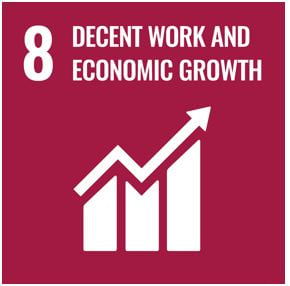Safety is our top priority in everything we do, and everyone at Metsä Fibre has the right to a safe workplace. Our goal is zero accidents and we want to make sure that every Metsä Fibre employee and every employee of our partners heads home healthy. We strongly believe that professionals put safety first, and we aim for zero accidents.
Key aspects of safety management include proactive safety work, risk identification and assessment, addressing unsafe working methods, and the entire personnel’s commitment. Examples of daily proactive safety work include regular safety talks and safety inspections at our mills and sawmills, as well as actively implemented safety observations. All accidents at work are reported and carefully investigated, and the lessons learned from the inspections are shared with our other mills to avoid similar situations in the future.
In 2023, proactive safety work was carried out systematically in all Metsä Fibre’s operations: for example, more than 90 per cent of the corrective measures concerning safety agreed for 2023 were implemented in all units during the year.
At all our mills, we observe the ISO 45001 occupational health and safety standard and Metsä Group’s shared safety management principles and processes, which help manage safety at work throughout the group. The development and harmonisation of group-level safety standards began in 2020 and continues through the deployment of the new standards and the continuous improvement of the instructions currently in use. All our mills also use the 5S method to increase productivity, safety at work and wellbeing.
We engage in long-term efforts to improve safety at work and require occupational safety skills from our suppliers and partners as well. Working on-site requires the safety induction to be completed. All our employees and the employees of our partner companies working at our mills are inducted in safe ways of working.
Wellbeing at work
Our operations are based on continuous improvement. This creates opportunities to increase skills and find new strengths. As an employer, we are guided by several policies and our Code of Conduct, which everyone is expected to observe.
For us, excellent management is inspiring, goal-oriented, demanding and fair. Everyone has a right to an annual performance and development appraisal. We support employee development by providing on-the-job learning, training courses and work cycles.
Promoting and maintaining wellbeing at work and working capacity is based on proactive action. We have a model at our disposal that includes early intervention, work capacity evaluation and a personal work ability plan. We provide our managers with tools and training to identify any situations that potentially compromise wellbeing at work, and we encourage our employees to proactively take care of their health by providing information about how to improve recovery, the effects of shift work, and ergonomics, among other things. We have extensive occupational healthcare services, and we also support leisure time activities such as exercise and culture in many ways.
We measure the job satisfaction of our personnel through a personnel survey conducted every other year. Based on the survey results, development measures are defined for the identified development areas, and we systematically monitor their implementation. In the 2023 personnel survey, the personnel’s job satisfaction decreased to the level A+. Our goal is to achieve the very good AAA level by 2030.
Measures towards 2030
- We promote safety at work by investigating all incidents and learning to work proactively.
- We promote job satisfaction and measure the results.
Indicators by the end of 2030
- 0 accidents (TRIF)
- AAA: job satisfaction among personnel at a very good level
International Sustainable Development Goals (SDGs) related to the target:

